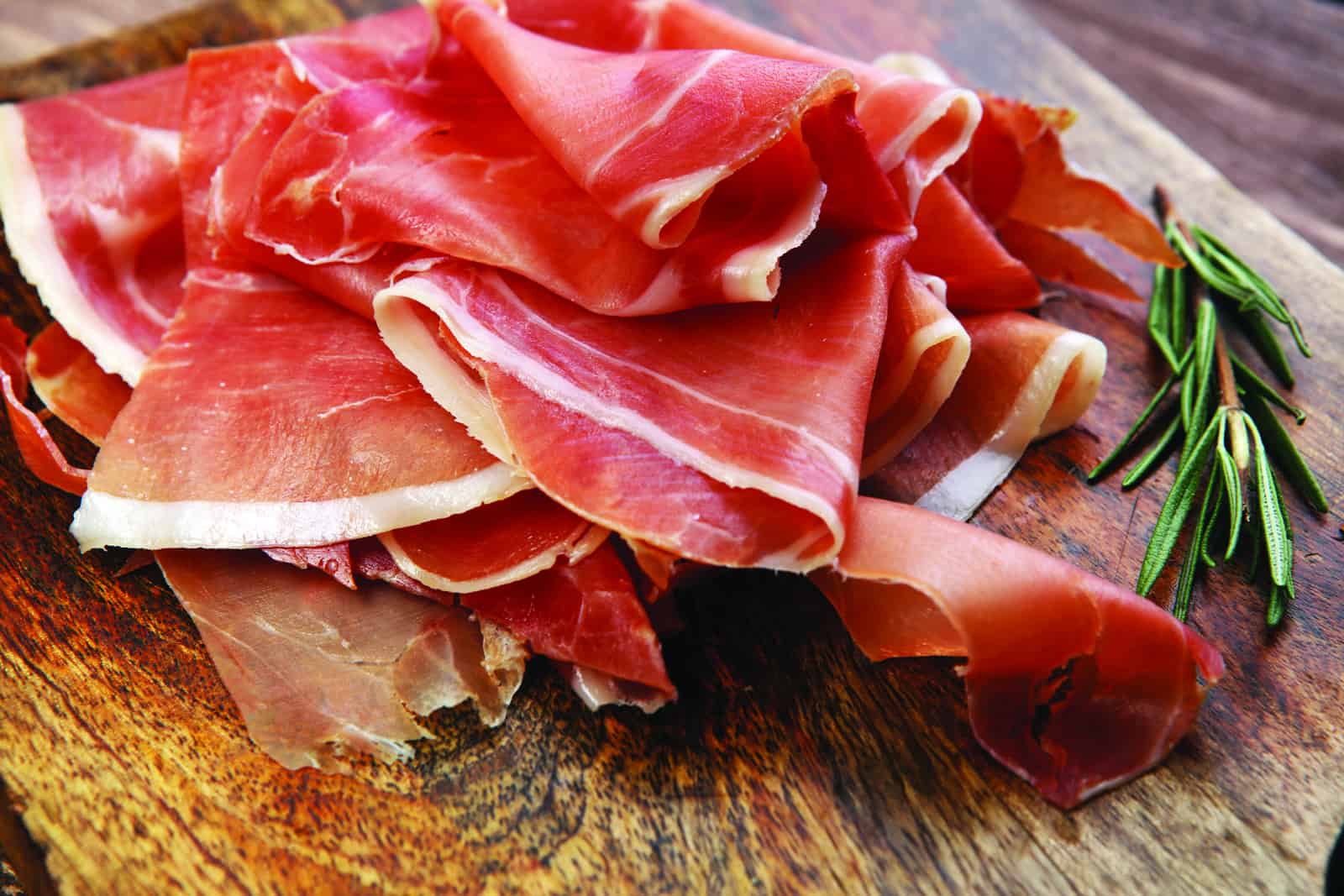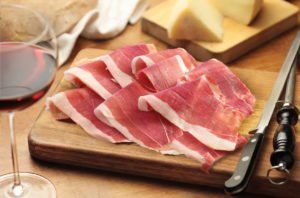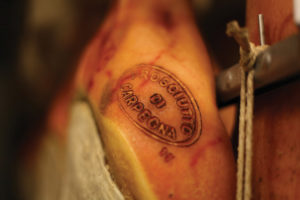
On my first day of work at a gourmet cheese and charcuterie shop, prosciutto wasn’t part of my formal onboarding. But at the end of my seven-hour shift—my head filled with SKUs, PLUs, and daily to-dos—someone requested a quarter pound of prosciutto di Parma.
She was one of our tougher regular customers, but I didn’t know that yet. Left alone behind the counter, I awkwardly hefted the giant leg of meat out of its case, placed it right-side-up (or so I assumed) on the slicer, and fired up the blade. I covered one sheet of parchment paper in long slivers of meat, neatly overlapped, and was about to start a fresh sheet when I heard a voice behind me say, “Stop.”
I turned. The woman was leaning around the display case, nearly in the “Employees Only” zone, craning to look at my work. She held out a hand. “May I?”, I offered her my first sheet of sliced prosciutto for inspection. She looked at it, looked at me, squinted, and said, “Is this your first day?” I nodded. She straightened up and stepped back. “I thought so. Try again. Much thinner.” She smirked slightly. “And never overlap.” Over the next few years, I would come to enjoy working with this always decadent, sometimes incorrigible meat, much as I came to enjoy working with this particular customer (whose bark turned out to be worse than her bite). I loved the challenge a new prosciutto presented: the tough-as-nails rind with its blonde stubble, the staggering weight of the thing, the way the eyelash-thin, translucent pink sheets would ruffle slightly along their fatty edges when sliced just so. Prosciutto di Parma was the Hope Diamond of our shop, precious and striking, if not a little cursed.
Prosciutto crudo is the proper name for what the English-speaking world knows as the dry, salt-cured, rosy pink antipasto meat that practically melts in the mouth when sliced thin enough. The word “prosciutto” itself simply means “ham” in Italian and is not a regionally protected label; but varieties like prosciutto di Parma, prosciutto di San Daniele, and prosciutto Toscano can only be made in specific parts of Italy—hence their names.
The process of making prosciutto crudo traditionally begins with butchering the hind leg of a pig or boar, covering it in salt, leaving it to rest for several weeks, then washing, seasoning, and hanging it to dry in a cool environment. (Some off-brand makers use nitrates to aid preservation, but these are verboten in traditional production houses.) The curing process can take anywhere from nine months to three years. This dry-aging technique makes the raw meat safe to eat, since the salt draws out all moisture and wards off bacteria. When sliced and laid out at room temperature, prosciutto tends to relax and soften, developing a sheen of fat that renders it quite sticky. This, I soon discovered, was why my customer at the cheese shop insisted I “try again,” without overlapping the slices on my sheet.
Italian prosciutti are made under different protected designations of origin and take on the flavors of their surroundings. Some varieties are slightly sweet, while others develop a nutty richness, depending on altitude, the animals’ diet, or the aging window. Like most cheeses, prosciutto can be enjoyed in many contexts: in a sandwich, on a pizza, wrapped around fruit, or flying solo. The hock, or what remains of a spent leg, can even be used to flavor soups and stews.
Prosciutto is to cheese as what chocolate is to cherries: not required for maximum enjoyment, but a natural pairing that just makes sense. Find these offerings at your local gourmet shop or at a nationwide retailer like Murray’s or Di Bruno’s.
PROSCIUTTO DI PARMA DOP + PARMIGIANO REGGIANO DOP
The first mention of prosciutto crudo appeared in writing in 100 B.C., in praise of the dry-aged specialty produced in the northern Italian town of Parma. To this day, prosciutto di Parma is made only with natural ingredients sourced from the area around Parma, including heritage pork, sea salt, and alpine breezes. Savory and delicate, this prosciutto crudo is perfect wrapped around a sliver of—what else?—its cheesy neighbor, Parmigiano Reggiano.
PROSCIUTTO DI SAN DANIELE DOP + SBRINZ
Made in the small village of San Daniele in the Friuli Venezia Giulia region, the process for making this prosciutto crudo involves a unique pressing technique. During the salting stage, each leg is pressed for several days, which forces more moisture out and causes the salt to penetrate even further into the meat. The pig’s trotter is also left intact on the leg, which lends a whole new layer of, uh, intimacy to its consumption. Darker and sweeter than its cousin from Parma, prosciutto di San Daniele loves a salty cheese like Sbrinz.
PROSCIUTTO TOSCANO DOP + CYPRESS GROVE MIDNIGHT MOON
The unique tradition of this Tuscan prosciutto crudo began with the de Medici family, who regulated its production in the fifteenth century. Salt is not the only seasoning that lends prosciutto Toscano its sparkle; each leg is rubbed with a mix of peppercorns, juniper berries, garlic, laurel, and rosemary, all sourced from the surrounding region. Prosciutto Toscano features less fat than other prosciutti, which makes it slightly drier. Pair this earthy, salty specimen with a sweet slice of Midnight Moon goat gouda.
PROSCIUTTO DI CARPEGNA DOP + CRAVE BROTHERS MARINATED FRESH MOZZARELLA CILIEGINE
Using a method of preparation born in the Middle Ages, family-owned Fratelli Beretta maintains one of the strictest prosciutto production houses out there. Only one breed of heritage pig provides the meat, called pesante padano or “heavy pigs,” (rude), and the sea salt must come from the small coastal village of Cervia. Fratelli Beretta’s proprietary blend of lard and spices lends prosciutto di Carpegna a delicately briny flavor, like seaside air. Bring out the herbal notes with a marinated mozzarella.
LA QUERCIA PROSCIUTTO AMERICANO + SAGE FARM GOAT DAIRY SPRUCE
My personal favorite cured meat from my old job, La Quercia prosciutto Americano is the Cali girl omega to prosciutto di Parma’s alpha. She’s got all the same characteristics, but she’s just a little…extra. Savory and aromatic, this prosciutto is excellent with a cheese that brings out its woodsy notes, like Sage Farm’s Spruce.








